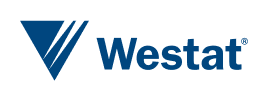This website uses cookies so that we can provide you with the best user experience possible. Cookie information is stored in your browser and performs functions such as recognizing you when you return to our website and helping our team to understand which sections of the website you find most interesting and useful.
ImprovingImproving
Lives Lives
Improving Lives
Westat offers innovative professional services to help clients improve outcomes in health, education, social policy, and transportation. We are dedicated to improving lives through research.
About WestatApril 19, 2024
April 17, 2024
April 16, 2024
April 15, 2024
April 10, 2024
April 1, 2024
-
The U.S. currently faces a crisis in Black maternal health. Black women die from pregnancy complications at a rate 2 to 4 times higher than…
Read More about Doula Support in Black Maternal Health -
With 4 decades of designing and managing large, complex surveys, Westat’s Brad Edwards has decided to add another leadership position to his resume by becoming one…
Read More about Leading with Diverse Ideas: Edwards Shares Vision for JSSAM -
Since its founding 50 years ago, the Special Supplemental Nutrition Program for Women, Infants, and Children (WIC) has been a critically needed source of food…
Read More about Leveraging WIC EBT Data for In-Depth Program Analysis
-
Biostatistics and Epidemiology
Westat optimizes clients’ clinical trials and observational and disease surveillance studies to rapidly generate the intelligence needed to safeguard and improve the nation’s health.
Read More about: From data to discovery, from discovery to solutions. -
Food and Nutrition
When food insecurity or lack of knowledge about healthy eating threaten Americans’ health, Westat’s work supports nutrition assistance programs, ensuring access to affordable, nutritious food and receipt of benefits without compromising effective public fund management.
Read More about: From data to discovery, from discovery to solutions. -
Survey Design
Our decades of experience and innovative strategies in sampling, multimode data collection, and instrument development ensure high-quality, cost-effective, and representative data collection for surveys of any size and scope.
Read More about: From data to discovery, from discovery to solutions.

What is the most complete source of data on the use and costs of health care for Americans?
Policy changes in the U.S. health care delivery and financing system affecting how Americans use and pay for health care services and prescription drugs require continuous large-scale data updates.
Read More


